-
Motivating businesses to adopt building resiliency standards
Increased resilience for buildings in the face of hurricanes, earthquakes, terrorism, or cyberattacks has been a major national security focus over the past decade. Such resilient buildings not only would be less susceptible to damage and work interruption but could become community gathering places in a general crisis. It will not be easy, however, to secure voluntary adoption of resiliency standards by industry and builders without adequate justification.
-
-
Tick rover robot kills ticks dead
The day may not be too far away when homeowners can schedule monthly tick clearing service, drastically reducing the risk of tick-borne illness in their pets and children. This is because the “tick rover” robot has just cleared a major hurdle. Testing last month indicated unequivocally that the device kills between 75 and 100 percent of the ticks in its path.
-
-
Teachers honored for inspiring tomorrow’s generation of engineers
The future of the engineering profession received a boost when the National Engineers Week Foundation announced the three winners of the 2013 DiscoverE Educator Awards on 3 June. Now in its second year, the program recognizes educators teaching grades 6 through 12 for their effective methods to interest kids in engineering through math and science. The American Society of Civil Engineers (ASCE) is a sponsor of the award.
-
-
Harvesting carbon dioxide to produce electricity
Electric power-generating stations worldwide release about twelve billion tons of CO2 annually from combustion of coal, oil, and natural gas. Home and commercial heating produces another eleven billion tons. Researchers developed a technology which would make the CO2 react with water or other liquids and, with further processing, produce a flow of electrons that make up electric current.
-
-
UMaine student develops affordable option for shoring up Maine’s aging bridges

The State of Maine Department of Transportation is responsible for 2,772, or 70 percent, of the bridges in the state. A 2007 report found that of those bridges, 205 are more than 80 years old, 244 were considered in poor condition, and 213 were found to be structurally deficient. Additionally, 288 bridges were at risk of closure or weight restrictions between 2007 and 2017. Replacing all these bridges would be too costly. Researchers developed software designed specifically to assess the load rating of flat-slab bridges to determine which bridges can be repaired instead of replaced. For the bridges that can last a few more years with reinforcing instead of replacing, the researchers engineered a retrofitting system which could be applied to increase the bridge’s strength and weight limits.
-
-
Water purifier for soldiers, first responders successfully tested in the field
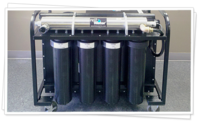
A new easy-to-carry water purifier that could give Marines and first-responders access to clean water wherever they go successfully completed its first operational test. The new purifier was developed to help reduce enormous logistical burdens already faced by forward-deployed personnel. There are two versions — one that can treat 1,000 gallons per day and one that can handle 5,000 gallons per day.
-
-
Making power lines safer
Last year, blackouts left 620 million people in India without power for a couple of days, and cost the U.S. economy more than $120 billion. Electric sparking has been blamed for major bushfires in Australia. Researchers have invented and patented a way of detecting and locating potential electrical faults along long stretches of power line before they occur.
-
-
Wildfires to get more common, harder to control
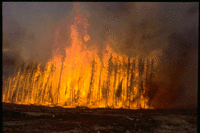
Wildfires are getting worse, as evidenced by the devastation caused in Australia in 2009 and again last year, in Russia in 2010, in Canada’s Slave Lake and Colorado Springs in 2011, and in Arizona earlier this year. The world’s wildfires annually burn between 350 million and 600 million hectares of forest, an area equivalent to the size of India. Researchers predict that global warming will increase severity of wildfires threefold by end of century.
-
-
New iceberg theory points to rapid disintegration, exacerbating sea level rise
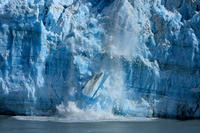
In events that could exacerbate sea level rise over the coming decades, stretches of ice on the coasts of Antarctica and Greenland are at risk of rapidly cracking apart and falling into the ocean, according to new iceberg calving simulations from the University of Michigan.
-
-
Climate forecasts predict crop failures
Climate data can help predict some crop failures several months before harvest, according to a new study. Scientists found that in about one-third of global cropland, temperature and soil moisture have strong relationships to the yield of wheat and rice at harvest. For those two key crops, a computer model could predict crop failures three months in advance for about 20 percent of global cropland.
-
-
New underwater robots mimic designs found in nature
In recent years, robotic underwater vehicles have become more common in a variety of industrial and civil sectors. Now, a new class of underwater robot has emerged that mimics designs found in nature. These “biomimetic” vehicles promise to lead to new underwater technologies that could help the oil and gas industry, underwater humanitarian demining, environmental monitoring, search and rescue operations, anti-terrorist activities, harbor surveillance, coastal security and fisheries management, and more.
-
-
Young engineers compete in underwater robotics race
Student-built autonomous underwater vehicles will speed through the depths of a Navy pool in a battle for supremacy at the 16th International RoboSub Competition. The competition is being held this week (22-28 July). In addition to building autonomous underwater vehicles, teams are also responsible for creating Web sites and writing journal papers that outline their work.
-
-
Ben-Gurion University student team’s Hydro Camel competes in RoboSub Competition
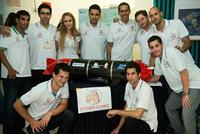
Today, there are many remotely operated submarines that handle important tasks, such as checking underwater pipelines, mapping underwater minefields, searching for locations to place communication cables, and searching for sunken vessels. These marine vessels, however, are limited by effective communication cables and require frequent human-operator contact. Ben-Gurion University of the Negev is developing a more accurate and effective autonomous, independently thinking underwater vessel that would revolutionize these and other tasks. The BGU entry in the RoboSub Competition is called Hydro Camel.
-
-
U.K. water industry: fracking may contaminate U.K. drinking water
U.K. water companies have warned the shale gas industry that the quality of U.K. drinking water must be protected at all costs and fracking must not harm public health. Shale gas fracking could lead to contamination of the water supply with methane gas and harmful chemicals if not carefully planned and carried out.
-
-
Predicting what could happen if Hurricane hits
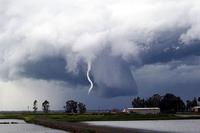
A Sandia National Laboratories team is gearing up for hurricane season, readying analyses to help people in the eye of a storm. The team has two jobs: conducting annual “hurricane swath” analyses of probable impacts on the Gulf Coast and East Coast, and providing quick analyses of crisis response in the face of an imminent hurricane threat to the United States. A swath analysis looks at how a hurricane might interrupt critical services and at impacts to infrastructure specific to an area, such as petroleum and petrochemical industries in Houston or financial services in New York City. It also looks at such things as the economic impact of the storm or how it could upset food deliveries.
-
More headlines
The long view
New Technology is Keeping the Skies Safe
DHS S&T Baggage, Cargo, and People Screening (BCP) Program develops state-of-the-art screening solutions to help secure airspace, communities, and borders
Factories First: Winning the Drone War Before It Starts
Wars are won by factories before they are won on the battlefield,Martin C. Feldmann writes, noting that the United States lacks the manufacturing depth for the coming drone age. Rectifying this situation “will take far more than procurement tweaks,” Feldmann writes. “It demands a national-level, wartime-scale industrial mobilization.”
How Artificial General Intelligence Could Affect the Rise and Fall of Nations
Visions for potential AGI futures: A new report from RAND aims to stimulate thinking among policymakers about possible impacts of the development of artificial general intelligence (AGI) on geopolitics and the world order.
Smaller Nuclear Reactors Spark Renewed Interest in a Once-Shunned Energy Source
In the past two years, half the states have taken action to promote nuclear power, from creating nuclear task forces to integrating nuclear into long-term energy plans.
Keeping the Lights on with Nuclear Waste: Radiochemistry Transforms Nuclear Waste into Strategic Materials
How UNLV radiochemistry is pioneering the future of energy in the Southwest by salvaging strategic materials from nuclear dumps –and making it safe.
Model Predicts Long-Term Effects of Nuclear Waste on Underground Disposal Systems
The simulations matched results from an underground lab experiment in Switzerland, suggesting modeling could be used to validate the safety of nuclear disposal sites.
